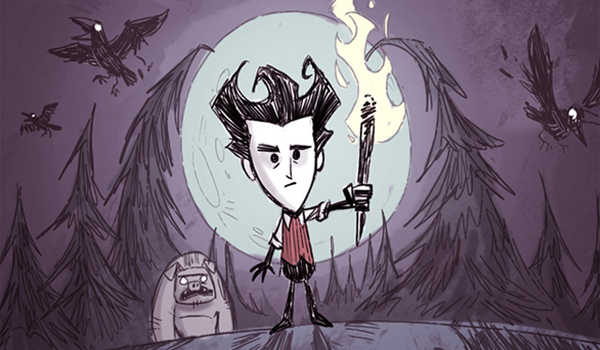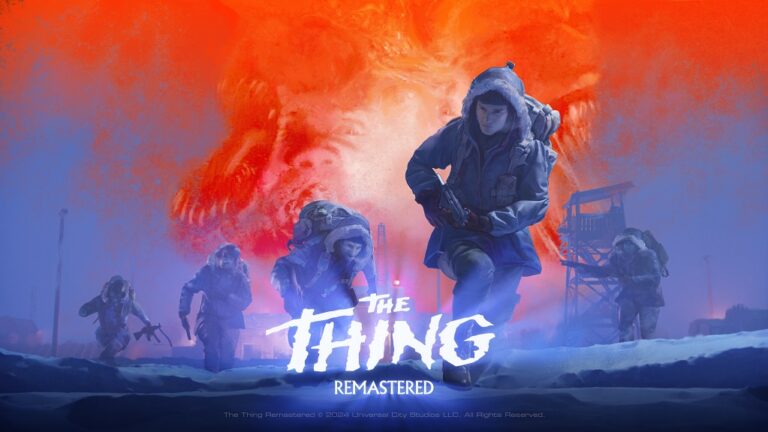
I think it’s fair to say that I’m a big fan of Minecraft. When I first purchased the game, although it was still in beta at that point, my classmates and I began maintaining a server, which soon became our main after school activity. I still play the game regularly to this day, so when I heard that Klei Entertainment was producing a survival game that involved crafting, it immediately got my attention. Let’s dive in, shall we?
The game puts you in the shoes of one of several gloomy characters, who wake up in the middle of a strange, uncivilized world. A suspicious man greets you briefly each time you start a new game, but he only really informs you that you don’t look too good, and that you might want to find some food. That is where the storytelling ends and the game leaves it to you, the player, to figure out how to progress.
Whereas Minecraft has countless different ways to play, this title streamlines the gameplay and emphasizes the survival aspect of the game. The world is littered with resources to gather, monsters to overcome, and secrets to discover. The world is randomly generated each time you play, but prior to starting your session, you can manipulate the rate at which each object and entity appears, or even choose to disable some entirely. The default settings are alright at the start, but they slow the game down to a slog once your basic needs are taken care of and you need rare stuff like manure and silk to advance, so using this option is almost mandatory.

The game utilizes three different meters that represent your hunger, sanity and health. While both the “hunger” and “health” meters are pretty self explanatory, the sanity meter depletes during the evening and at night, or when encountering monsters, and can be resolved by inventing new items, or acting civilized. While health and hunger are directly related to your survival, the sanity meter plays a much different role in the game. The further the meter falls, the more surreal the world around you becomes. At first, you may start to see people appearing, and then disappearing at the blink of an eye, but later on, enemies will start to look more monstrous, and you even start to see weird “apparitions” roaming the world. As the sanity meter plummets, surviving becomes more difficult, but insanity also allows you to obtain items you wouldn’t otherwise be able to find and it’s only then that the art-style really starts to pay off.
These basic survival mechanics are backed up with a very neat crafting mechanic, which I feel sets the benchmark for the genre. Whereas Minecraft has a 3*3 grid on which you have to drop materials in the vain hope of them producing something, this game uses a menu that shows the items you can make and displays which components you will need for them. Furthermore, the menu is efficiently organized and allows you to quickly navigate to your desired items; a campfire, for example, can be found under the “fires” category, which it shares with torches and other light sources.
There is however one problem with the crafting, namely that the science machines unlock the majority of the recipes. The idea is that you can build the machines using the semi-rare gold nuggets and once you do that, it will automatically unlock most of the recipes for you. This is a problem because unlocking new recipes could have been a reward that the players could obtain through exploration (a recipe could be stuck in a random tree, for example). As it is now, there is not really much of a drive to keep playing, and this often led me to committing suicide just because I had run out of content.

The only major aspect that remains unflawed is the presentation, which is top notch. The game could have been designed by Tim Burton himself, since the art-style was clearly inspired by the popular filmmaker. Combine that with the gloomy characters and dialogue I mentioned earlier, as well as the lovely soundtrack, and it creates a very entertaining atmosphere.
If you are in the mood for a surreal adventure with a compelling artistic style, then this game is definitely for you. It has some regrettable problems, but Klei has already promised up to six months of free updates and content, so I am sure most of them will be resolved over time.
 (7.5 / 10)
(7.5 / 10)
Good
 (7.5 / 10)
(7.5 / 10)



